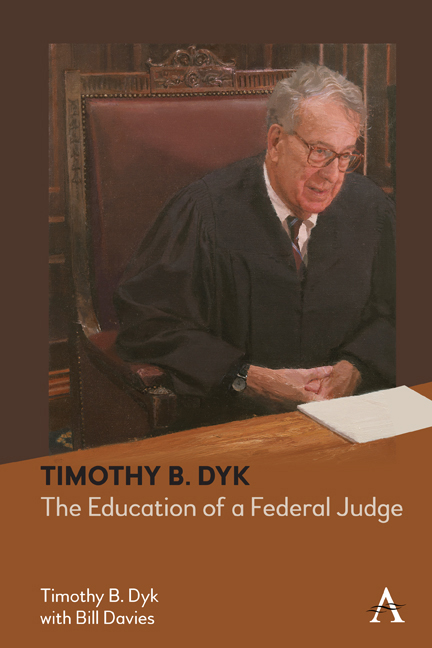Book contents
- Frontmatter
- Dedtication
- Contents
- Foreword
- Acknowledgments
- 1 Introduction
- 2 Family History
- 3 Early Life and Schooling, 1937–61
- 4 Clerking at the Supreme Court, 1961–63
- 5 The Tax Division, 1963–64
- 6 Wilmer Cutler, 1964–90
- 7 Jones Day, 1990–2000
- 8 Reflections on Changes in the Legal Profession
- 9 Becoming a Federal Judge, 1993–2000
- 10 The Confirmation Process, 1998–2000: Selected Diary Entries
- 11 Life as a Federal Judge, 2000–the Present
- 12 Epilogue
- Appendix
- Index
4 - Clerking at the Supreme Court, 1961–63
Published online by Cambridge University Press: 15 September 2022
- Frontmatter
- Dedtication
- Contents
- Foreword
- Acknowledgments
- 1 Introduction
- 2 Family History
- 3 Early Life and Schooling, 1937–61
- 4 Clerking at the Supreme Court, 1961–63
- 5 The Tax Division, 1963–64
- 6 Wilmer Cutler, 1964–90
- 7 Jones Day, 1990–2000
- 8 Reflections on Changes in the Legal Profession
- 9 Becoming a Federal Judge, 1993–2000
- 10 The Confirmation Process, 1998–2000: Selected Diary Entries
- 11 Life as a Federal Judge, 2000–the Present
- 12 Epilogue
- Appendix
- Index
Summary
Arriving at the Court
The central figure at the Supreme Court in those days was, of course, Chief Justice Earl Warren. Warren was a Californian, trained in law at Berkeley. He served in a number of leading positions in state government before being elected attorney general in 1939. When World War II broke out, Warren opposed the isolationists and supported Roosevelt's campaign to enter the fight. After Pearl Harbor, Warren was a leading proponent of the internment of Japanese Americans. By 1943, he had become governor, a position he held for 10 years. During this time, Warren had a national political profile, running as Thomas Dewey's vice presidential candidate in 1948 and losing to Eisenhower for the 1952 Republican presidential nomination, a defeat for which he held Richard Nixon responsible.
Because of Warren's ultimate support of Eisenhower's candidacy, Warren was promised the next vacant spot on the Supreme Court. In 1953, when Chief Justice Fred Vinson died from a heart attack, Eisenhower was reluctant to appoint Warren, but Warren insisted. He was given a recess appointment (unheard of today) and was confirmed for the position in March 1954. Warren had not been a Supreme Court advocate, arguing only one case before the Court in his time at the bar—Central Pacific Railyard Company v. Alameda County, 284 U.S. 463 (1932)—a quiet title action involving the right to real estate in California's Alameda County, where Warren was then the district attorney.
If the central figure at the Court in 1961 was Warren, the central issue was racial discrimination in the aftermath of Brown v. Board of Education of Topeka, 347 U.S. 483 (1954), decided seven years earlier. At the end of the previous century, the Supreme Court had decided the notorious Plessy v. Ferguson, 163 U.S. 537 (1896), which held that state-enforced racial segregation was consistent with the Constitution's equal protection clause. With the blessing of Plessy, the Southern states enforced “separate but equal” racial segregation in the school systems. Subsequent Supreme Court decisions had chipped away at Plessy in higher education cases, holding that graduate and professional programs could not exclude students or segregate them on the basis of race in McLaurin v. Oklahoma State Regents, 339 U.S. 637 (1950) and Sweatt v. Painter, 339 U.S. 629 (1950), because equal facilities were not available to Black students.
- Type
- Chapter
- Information
- Timothy B. DykThe Education of a Federal Judge, pp. 39 - 66Publisher: Anthem PressPrint publication year: 2022



